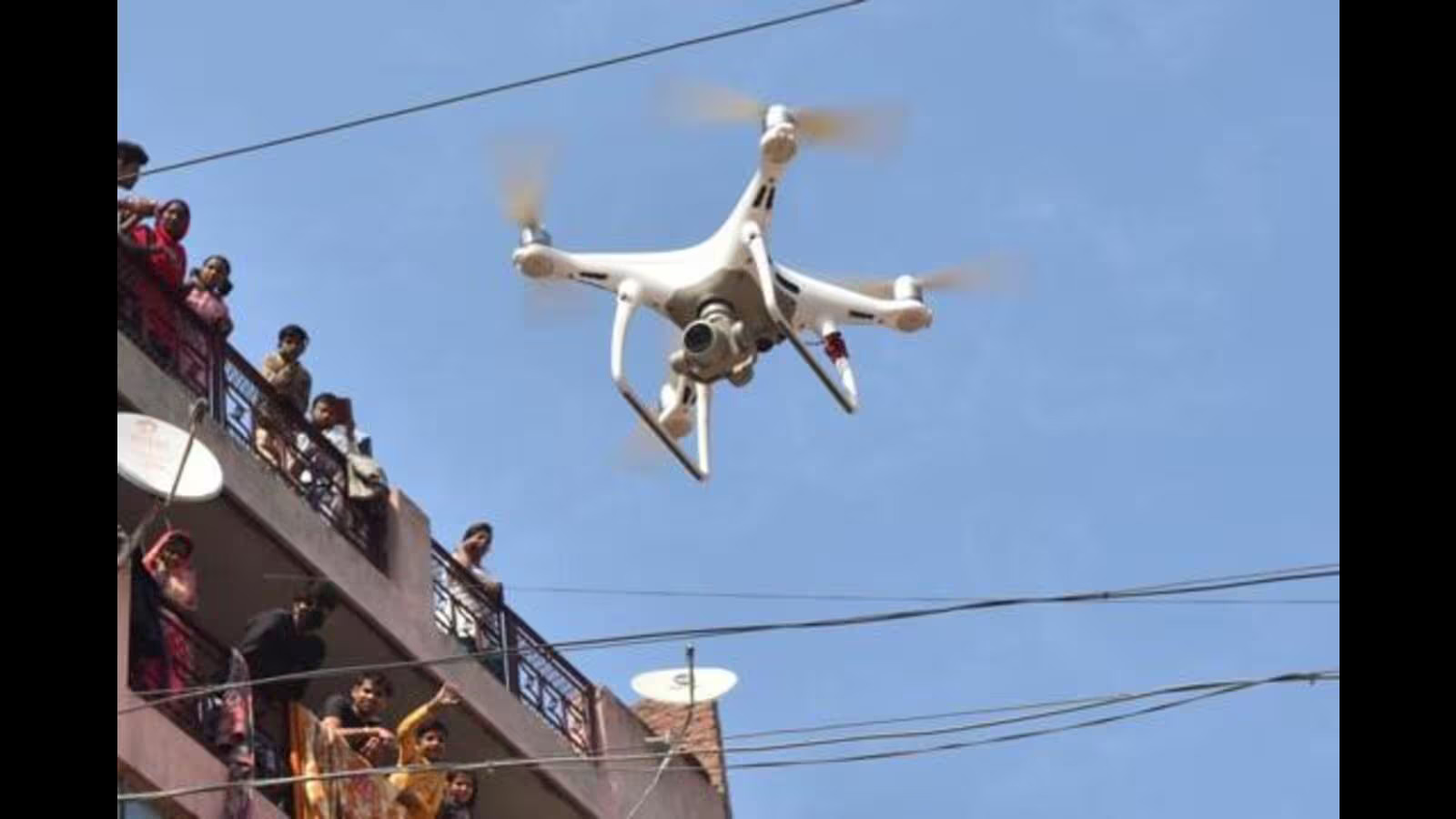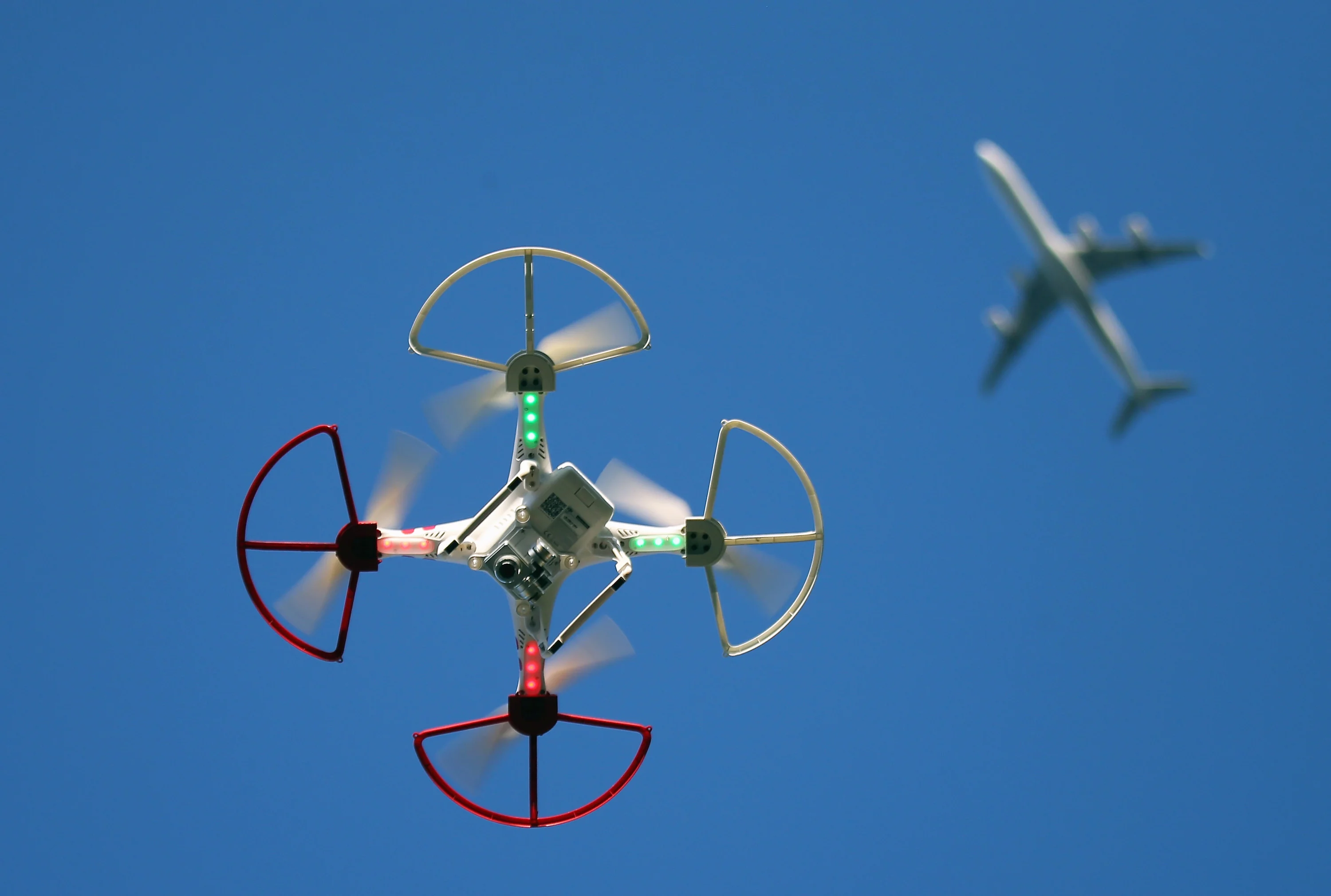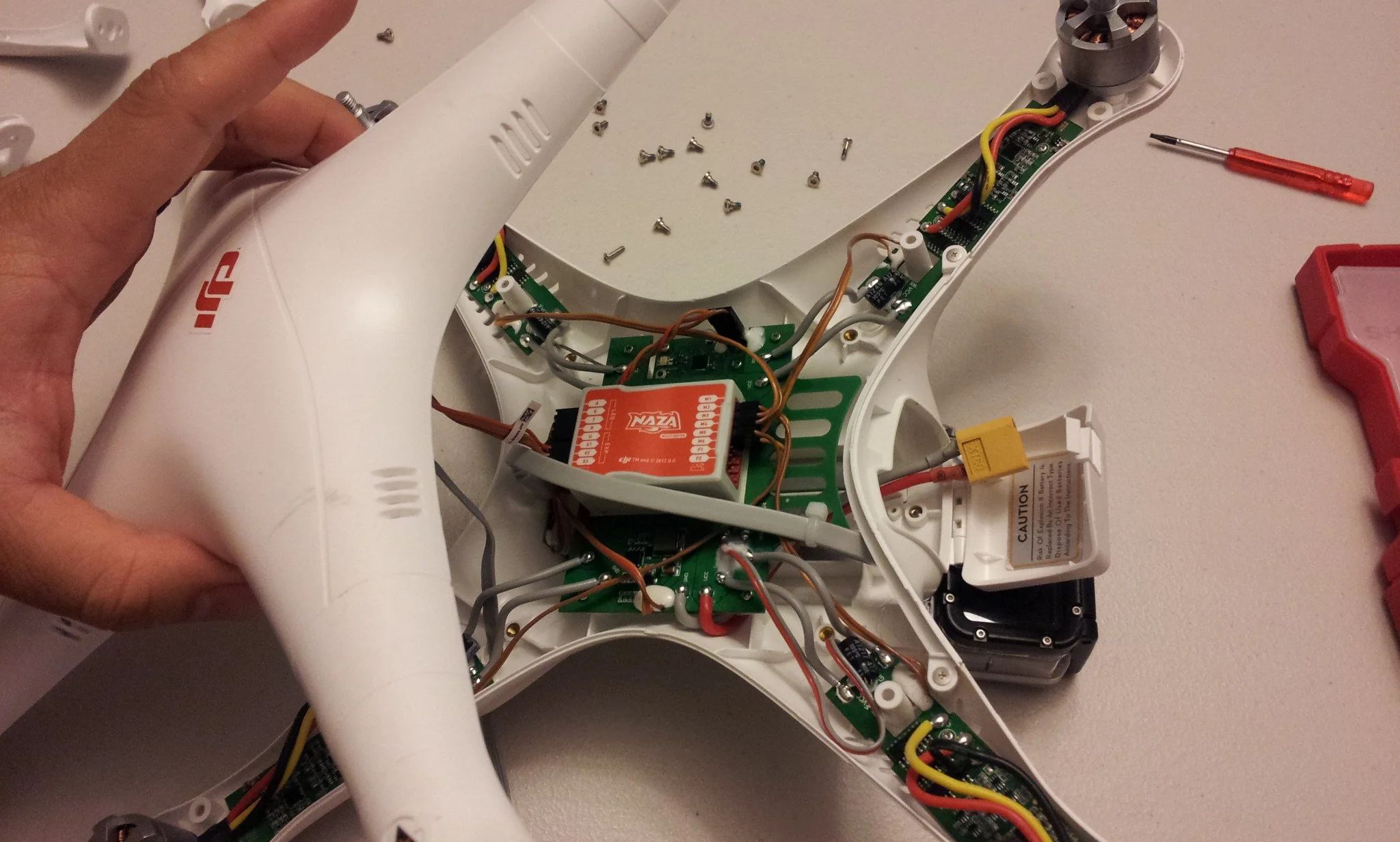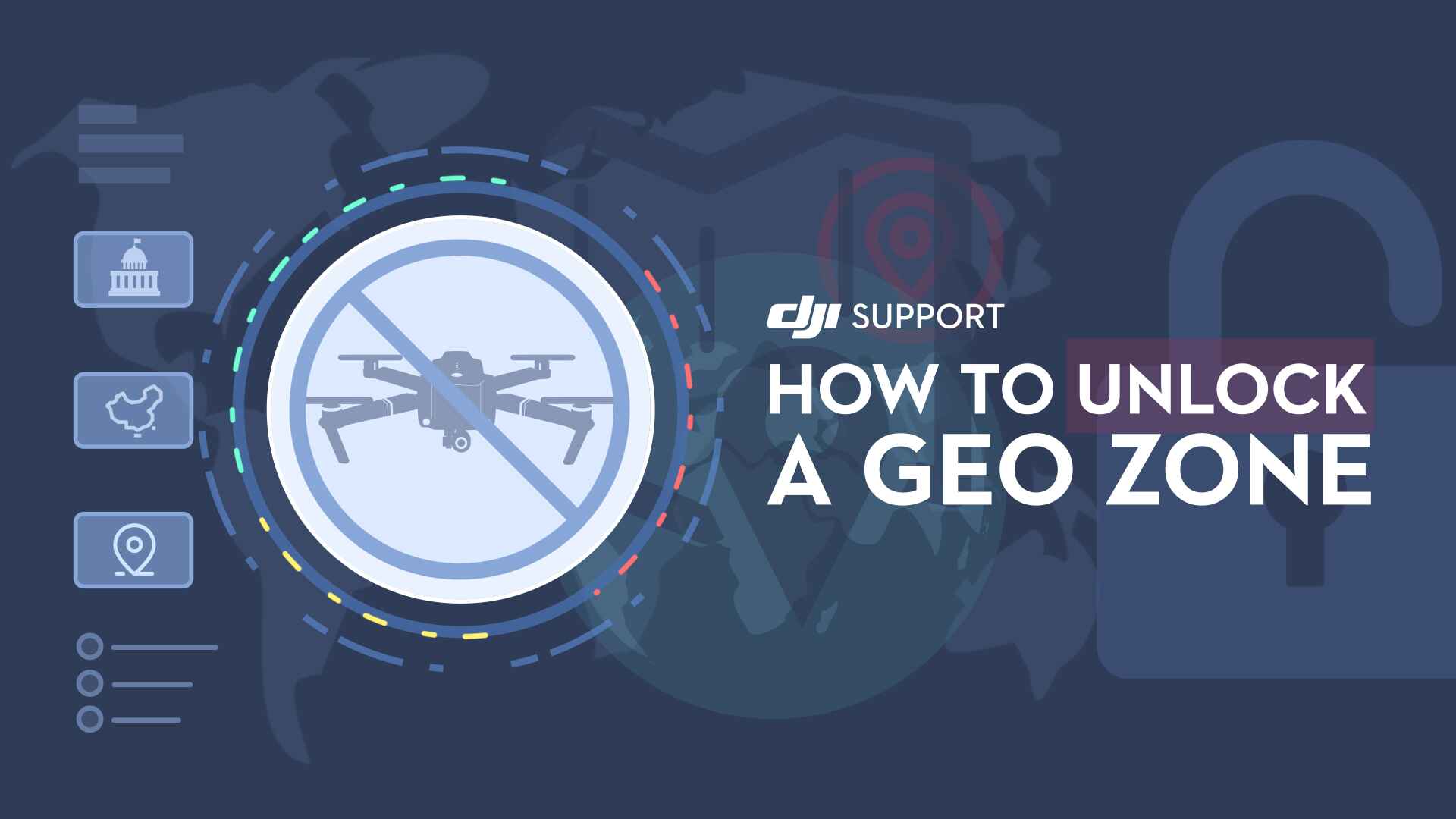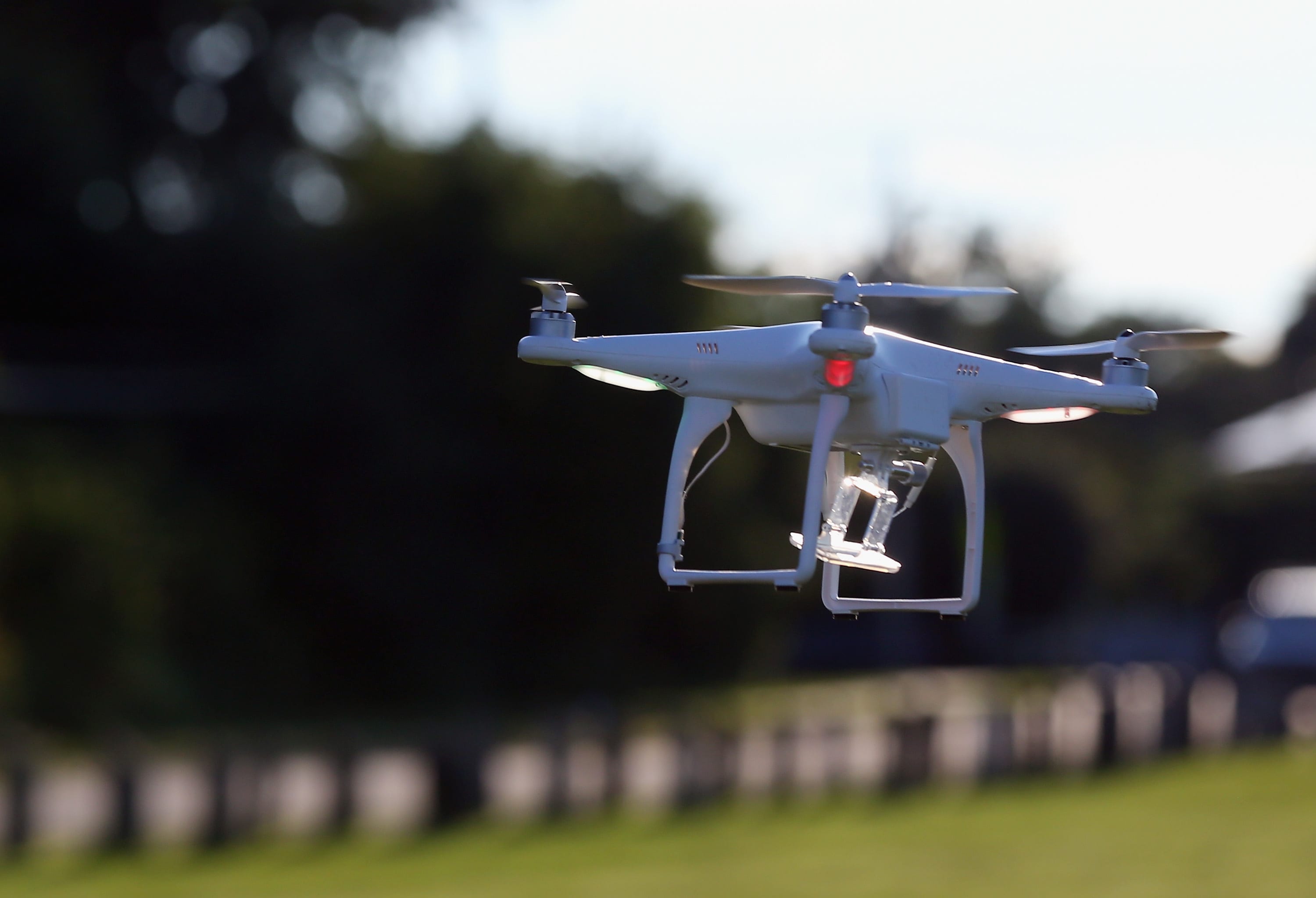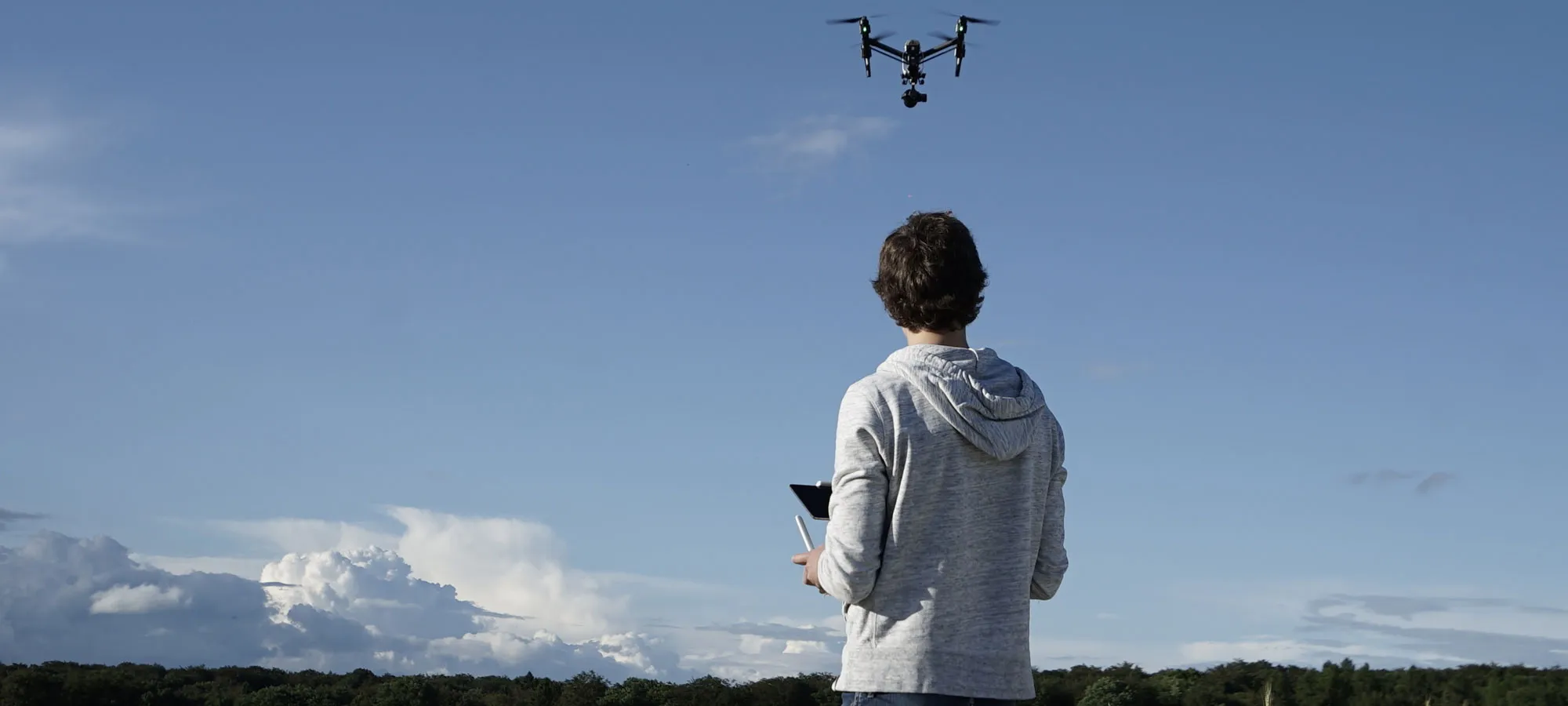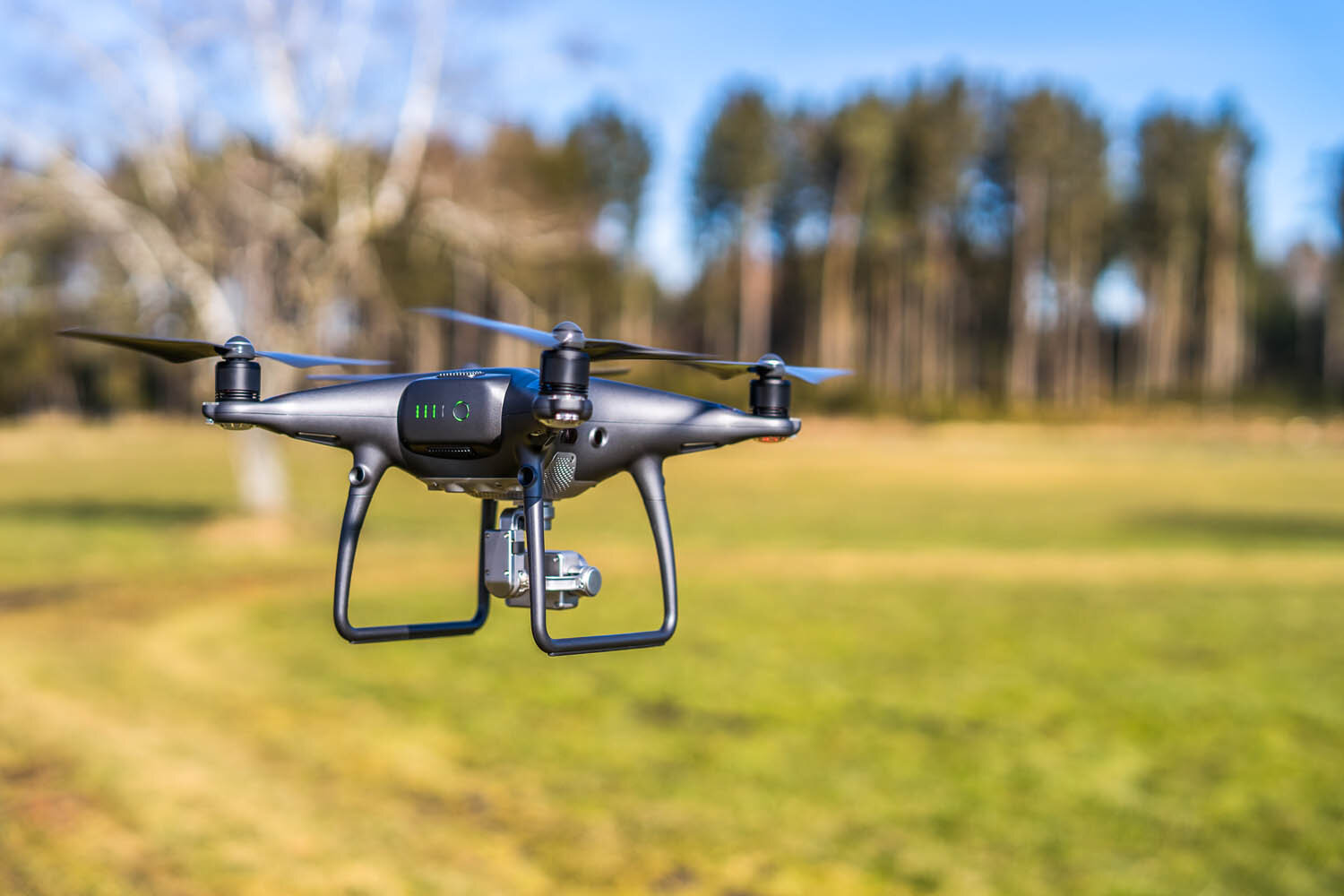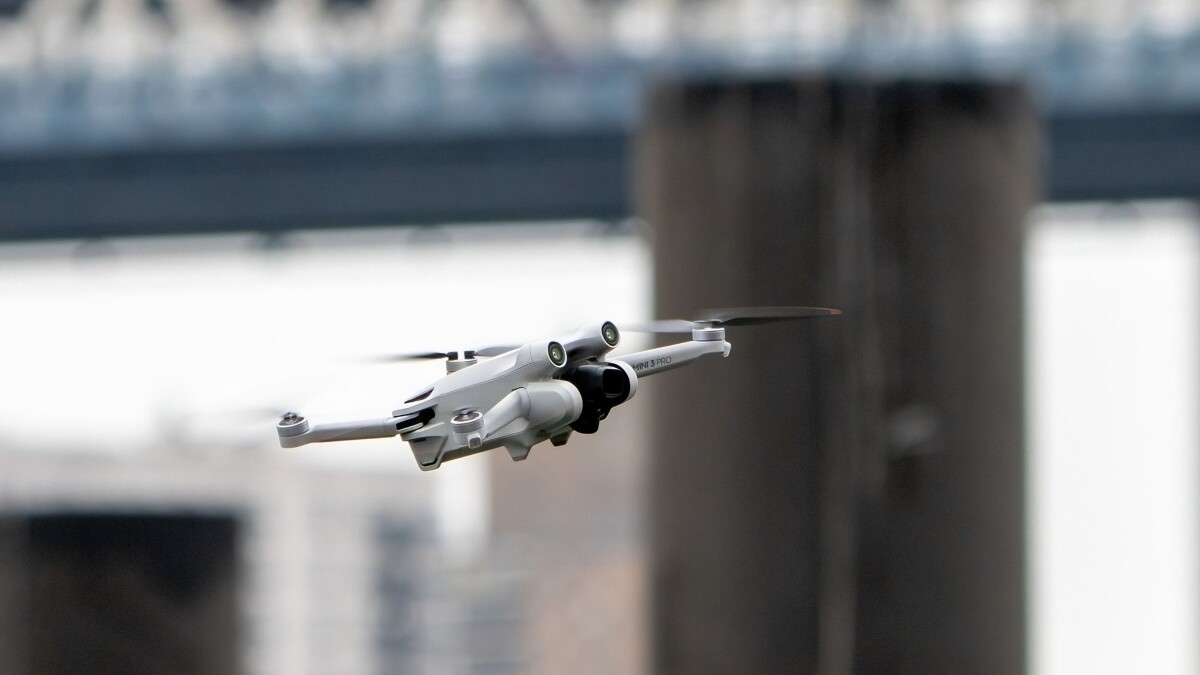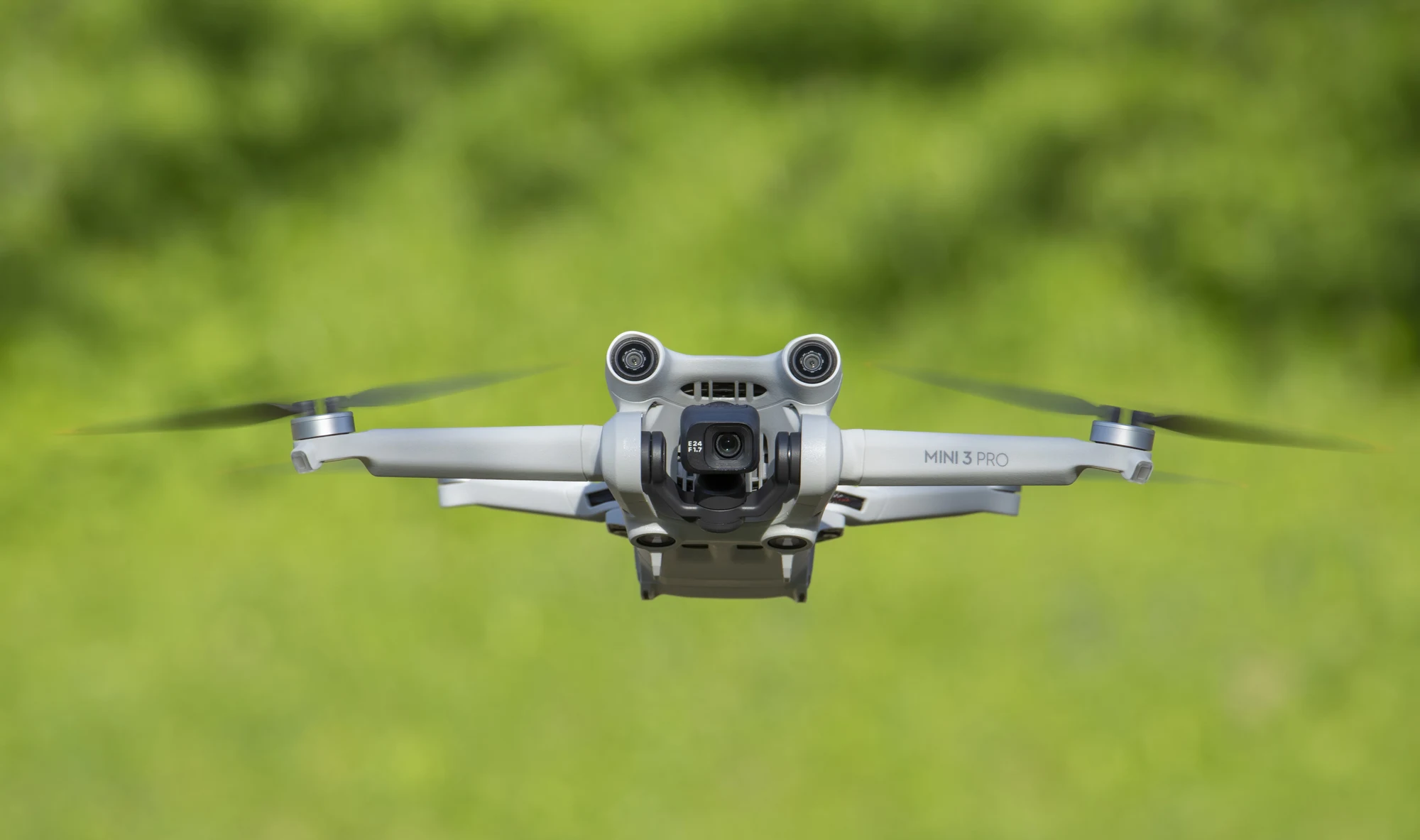Introduction
Welcome to the exciting world of drone flying! Drones have become increasingly popular, offering enthusiasts the opportunity to capture breathtaking aerial photographs and videos, and explore new horizons. However, it is important to note that not all areas are open for drone flights. Certain zones, such as airports, military installations, and national parks, have restrictions in place to ensure the safety of airspace and the privacy of individuals.
In this article, we will explore the topic of flying drones in restricted zones. We will discuss the various restrictions imposed, the permits required, and the safety precautions that need to be taken in order to fly a drone legally and responsibly in these areas.
Understanding and adhering to the rules and regulations surrounding drone flights in restricted zones is crucial. Violating these regulations can lead to serious consequences, including fines, legal implications, and even the confiscation of your drone. By following the guidelines outlined in this article, you will be able to navigate through restricted zones with confidence and enjoy the thrilling experience of flying your drone.
Whether you are a professional drone pilot or a recreational flyer, it is essential to have a solid understanding of the restrictions in place for flying drones in certain areas. By obtaining the necessary permits, taking adequate safety precautions, and abiding by airspace regulations, you can ensure a safe and enjoyable drone flying experience without compromising the privacy or safety of others.
So, let us delve into the world of restricted zone drone flying and equip ourselves with the knowledge and tools necessary to navigate through these spaces responsibly.
Understanding the Restrictions
Before embarking on a drone flight in a restricted zone, it is crucial to have a clear understanding of the specific restrictions that apply to the area. These restrictions can vary depending on the location, purpose, and nature of the zone. To ensure compliance, it is essential to thoroughly research and familiarize yourself with the rules and regulations in place.
One common type of restricted zone is airports. Flying a drone near an airport can pose a significant risk to air traffic and result in serious consequences. It is typically prohibited to fly a drone within a specified distance from the perimeter of an airport. The specific distance can vary depending on the country and airport, so it is important to check the local regulations and adhere to the guidelines provided.
Similarly, military installations have strict restrictions on drone flights. These areas are often off-limits to unauthorized drones due to national security concerns. Flying a drone near a military base can not only result in legal repercussions but also pose a threat to ongoing military operations.
National parks and wildlife reserves are another category of restricted zones for drone flying. These areas are intended to preserve and protect natural habitats and wildlife. In order to maintain the tranquility and environmental balance, drone flights are generally prohibited in national parks without obtaining special permits.
Additionally, certain events or public gatherings may have temporary restrictions on drone flights. For instance, during concerts, sports events, or festivals, drone flights are often not permitted due to safety concerns and potential interference with the event.
By understanding the restrictions in place for different zones, you can effectively plan your drone flights and avoid potential legal issues. Remember, it is your responsibility as a drone pilot to respect and abide by these restrictions in order to ensure the safety of others and protect the integrity of the areas you are flying in.
Obtaining the Necessary Permits
When planning a drone flight in a restricted zone, it is essential to obtain the necessary permits or authorizations to ensure compliance with the regulations. The process of obtaining permits may vary depending on the specific zone and jurisdiction, but there are some general steps you can follow.
Firstly, research the local regulations and requirements for drone flights in the restricted zone you intend to fly in. Identify the appropriate authorities or agencies that handle the issuance of permits for drone operations in that area. This could be a local aviation authority, a park management office, or a military base command.
Contact the relevant authority and inquire about the application process for obtaining a permit. Provide the necessary information and documentation they require, such as your drone’s specifications, your pilot certification, and the purpose of your flight. It is important to be clear and detailed in your application to increase the chances of approval.
Be prepared for a waiting period as the authorities review your application and verify your credentials. They may also assess the potential impact of your flight on airspace safety, public security, or environmental concerns. Patience is key during this stage, as the permit approval process can take some time.
If your permit is approved, ensure that you comply with any additional conditions or restrictions specified by the authority. This could include limitations on flight altitude, flight duration, or specific flight paths. By adhering to these requirements, you demonstrate your commitment to responsible drone flying.
Keep in mind that permit requirements may change over time. Stay updated with any updates or amendments to the regulations to ensure ongoing compliance. Additionally, it is advisable to have a copy of your permit with you during your drone flights in case you are requested to present it by authorities or security personnel.
Remember, obtaining the necessary permits is not only a legal obligation but also a way to ensure the safety of airspace and those present in the restricted zone. By following the proper procedures, you can enjoy your drone flights in restricted areas while respecting the rules and regulations set forth by the authorities.
Essential Safety Precautions
When flying a drone in a restricted zone, it is essential to prioritize safety to prevent accidents and ensure the well-being of others. Here are some essential safety precautions to keep in mind:
1. Thoroughly inspect your drone before each flight: Before taking off, conduct a pre-flight inspection of your drone to check for any signs of damage or malfunctions. This includes inspecting the propellers, batteries, and ensuring all connections are secure. Rectify any issues before proceeding with the flight.
2. Maintain a safe distance from people and property: Always ensure you maintain a safe distance from people, buildings, and vehicles. This will help prevent any potential accidents or damage in case of a drone malfunction or loss of control.
3. Fly within visual line of sight: It is crucial to maintain visual contact with your drone at all times. This will allow you to react quickly to any unforeseen obstacles or hazards. Avoid flying the drone beyond your line of sight, as this can increase the risk of accidents.
4. Be aware of weather conditions: Check the weather conditions before flying your drone. Adverse weather such as strong winds, heavy rain, or fog can affect the stability and control of your drone. Avoid flying in these conditions to ensure a safe flight.
5. Respect privacy: When flying your drone, respect the privacy of others. Avoid capturing images or videos of individuals without their consent, and refrain from flying your drone near private properties or areas where privacy may be compromised. Always be mindful of your surroundings and the impact your drone flight may have on others.
6. Emergency procedures: Familiarize yourself with emergency procedures should an incident occur during your flight. Be prepared to safely land the drone in case of a loss of control or low battery. Plan an emergency landing site and practice emergency procedures to enhance your ability to respond effectively.
By adhering to these essential safety precautions, you can significantly reduce the risk of accidents and ensure responsible drone flying in restricted zones. Safety should always be the top priority to protect both people and property.
Choosing the Right Drone for Restricted Zones
When flying a drone in restricted zones, it is crucial to choose the right drone that aligns with the specific requirements and limitations of these areas. Here are some factors to consider when selecting a drone for restricted zone flights:
1. Size and weight: Opt for a drone that is compact and lightweight. This will make it easier to maneuver and reduce the risk of collisions with obstacles or people. Additionally, lighter drones are often subject to fewer restrictions in terms of flight altitude and distance.
2. Noise levels: Consider the noise levels produced by the drone. Certain restricted zones, such as national parks or residential areas, have noise limitations. Choosing a drone with quieter propellers or a quieter motor can help ensure compliance with noise regulations and minimize disturbance.
3. Flight capabilities: Look for a drone with advanced flight capabilities, such as obstacle avoidance systems and GPS positioning. These features can enhance the safety and precision of your flights, particularly in restricted zones where there may be obstacles or restricted airspace to navigate.
4. Battery life: Choose a drone with a sufficient battery life to meet the flight duration requirements of restricted zones. Longer battery life allows for extended flight time and flexibility in maneuvering within the restricted zone.
5. Camera specifications: If you intend to capture aerial media in restricted zones, consider the camera specifications of the drone. Ensure that the camera meets your required resolution and image quality standards. Additionally, some areas may have restrictions on photography or videography, so it is important to be aware of and comply with these regulations.
6. Compliance with regulations: Check whether the drone model you are considering has the necessary certifications and compliances required by aviation authorities or specific restricted zones. This ensures that your drone meets the necessary safety and technical standards for flight in these areas.
It is essential to thoroughly research and review the specifications and features of different drones to choose the most suitable one for restricted zone flights. Consider consulting with experienced drone pilots or professionals who can provide valuable insights and recommendations based on their own experiences.
Remember, choosing the right drone sets the foundation for safe and responsible flight operations in restricted zones. By selecting a drone that aligns with the specific requirements and limitations of these areas, you can mitigate risks and ensure compliance with regulations.
Familiarizing Yourself with Airspace Regulations
When planning to fly a drone in a restricted zone, it is essential to have a solid understanding of the airspace regulations that apply to the area. Familiarizing yourself with these regulations will help you navigate the airspace safely and avoid any potential conflicts. Here are some key aspects to consider:
1. Classifications of airspace: Airspace is divided into different classifications, such as Class A, Class B, Class C, Class D, and Class E. Each classification has its own set of rules and restrictions. It is important to understand the characteristics and limitations of the specific airspace classification in which you plan to fly your drone.
2. Altitude restrictions: Different airspace classifications have specific altitude restrictions for drone flights. For example, certain zones may have a maximum altitude limit of 400 feet above ground level (AGL), while others may have different restrictions based on proximity to airports or other factors. Ensure that you are aware of and comply with the altitude limitations set for the airspace you will be operating in.
3. Notice to Airmen (NOTAM): Check for any active NOTAMs that may affect your planned flight. A NOTAM is a notice filed with aviation authorities to provide information about any temporary changes or hazards in the airspace. These could include events, construction, or other factors that may impact drone flights in the area. Stay informed and adjust your flight plans accordingly.
4. Air traffic control communication: Some restricted zones, especially around airports or military installations, require communication with the local air traffic control (ATC) authority before flying a drone. Be aware of any specific communication protocols or frequencies you need to follow to ensure coordination with other aircraft and maintain the safety of the airspace.
5. Restricted areas and prohibited zones: Familiarize yourself with any restricted areas or prohibited zones within the airspace you plan to fly. These areas may have additional restrictions due to national security concerns, sensitive installations, or protected wildlife habitats. Ensure that you avoid these areas to comply with the regulations in place.
6. Temporary flight restrictions (TFRs): Keep an eye out for any temporary flight restrictions that may be in place due to special events or situations. TFRs are put in place for reasons such as VIP movement, wildfire suppression, or disaster response. It is important to respect these restrictions and adjust your flight plans accordingly.
By familiarizing yourself with the airspace regulations relevant to your flight area, you can ensure safe and compliant drone operations in restricted zones. Stay updated with any changes or amendments to the regulations and always prioritize the safety of yourself, others, and the airspace around you.
Planning Your Flight Route
Planning your flight route is a crucial step in ensuring a successful and safe drone operation in a restricted zone. By carefully considering the following factors, you can create an effective flight plan that complies with regulations and minimizes risks:
1. Map analysis: Begin by thoroughly analyzing maps of the area where you plan to fly your drone. Identify any restricted zones, such as airports, military bases, or national parks, and mark them as no-fly areas. Take note of any airspace restrictions or altitude limitations and factor them into your flight plan.
2. Identify obstacles and hazards: Look for potential obstacles or hazards within your flight area. These could include tall buildings, power lines, or other obstructions that may affect your flight path. By identifying these hazards in advance, you can plan a route that avoids them and minimizes the risk of accidents or collisions.
3. Plan waypoints: Determine a series of waypoints that outline your intended flight path. This helps ensure that you stay within the boundaries of the restricted zone and maintain visual line of sight with your drone. Consider using GPS waypoints to automate the flight path and enhance precision.
4. Time of flight: Take into account the time of day when planning your flight route. Certain restricted zones may have specific time restrictions or regulations related to noise levels or privacy. Additionally, consider the availability of natural lighting for capturing the best aerial shots or videos.
5. Emergency landing zones: Identify suitable emergency landing zones within or near your flight area. In case of an emergency or loss of control, having predetermined landing locations can help minimize the risk of damage to people or property. Ensure that these landing zones are clear of obstacles and accessible.
6. Consider weather conditions: Evaluate the weather conditions for your planned flight time. Strong winds, rain, or fog can affect the stability and control of your drone. If the forecast indicates unfavorable weather conditions, it may be necessary to reschedule your flight or find an alternative location to ensure a safe operation.
7. Plan for contingencies: Prepare for unforeseen situations by planning for contingencies. Consider alternate routes or landing zones in case of unexpected obstacles, changing weather conditions, or other factors that may require adjustments to your original flight plan. This ensures that you can adapt and respond to any challenges that may arise during your flight.
By carefully planning your flight route and taking into account these factors, you can maximize the safety and success of your drone operation in restricted zones. Remember to review and update your flight plan regularly to accommodate any changes in regulations or environmental conditions. Prioritize safety and responsible drone flying throughout the planning and execution of your flight.
Flight Techniques for Restricted Zones
When flying a drone in a restricted zone, it is important to employ specific flight techniques to ensure compliance with regulations and maintain the safety of the airspace. Here are some key flight techniques to consider:
1. Fly low and slow: Keep your drone at a lower altitude to minimize the risk of interference with other aircraft or objects in the restricted zone. Flying at a slower speed allows for better control and reaction time, especially in areas with limited airspace.
2. Maintain visual line of sight: Always keep your drone within your visual line of sight. This allows you to monitor the position and movement of your drone effectively. Avoid flying your drone behind obstacles or in areas where it may be difficult to maintain visual contact.
3. Avoid sudden maneuvers: Refrain from making sudden and aggressive maneuvers with your drone in restricted zones. Smooth and controlled movements help ensure stability and reduce the chance of unexpected incidents or collisions.
4. Yield to other aircraft: Give priority to manned aircraft if you encounter them in the vicinity of the restricted zone. Move your drone away from their flight path and provide ample space to avoid endangering the safety of the manned aircraft or violating airspace regulations.
5. Be mindful of wind conditions: Pay close attention to wind conditions and how they can affect your drone’s stability and control. Strong gusts can make it challenging to maintain position and may increase the risk of drifting into restricted areas or obstacles. Adjust your flight technique accordingly and avoid flying in high winds if possible.
6. Use flight aids and technologies: Take advantage of flight aids and technologies available on your drone, such as obstacle detection and avoidance systems, GPS positioning, and return-to-home features. These can enhance the safety and precision of your flight, especially in restricted zones with potential obstacles or limitations.
7. Monitor battery levels: Keep a close eye on your drone’s battery levels during flight. Ensure that you have enough power to complete your flight and safely return to the landing site. It is advisable to plan your flight duration with a buffer to account for unexpected delays or wind conditions that may affect battery performance.
By adhering to these flight techniques, you can ensure a responsible and compliant drone operation in restricted zones. Remember to always prioritize safety and be aware of the specific regulations and restrictions that apply to the area you are flying in.
Emergency Procedures in Restricted Zones
While we always hope for smooth and incident-free drone flights, it is important to be prepared for potential emergencies, even in restricted zones. Having a clear plan and understanding of emergency procedures can help you respond swiftly and effectively. Here are some key emergency procedures to consider:
1. Loss of control: In the event of a loss of control over your drone, remain calm and try to regain control by carefully adjusting the controls. If control cannot be regained, activate the drone’s Return-to-Home (RTH) function, if available. This will prompt the drone to automatically fly back to its designated home location.
2. Low battery: If your drone’s battery is running low during flight, it is crucial to act promptly. Check the remaining battery capacity on your controller or device and decide whether to continue the flight or initiate the return-to-home procedure. Prioritize safety by ensuring you have enough battery power to safely navigate back to your landing site.
3. Obstacle avoidance: If you encounter an obstacle during flight, avoid making sudden movements or drastic maneuvers. Assess the situation and adjust your flight path or altitude to safely navigate around the obstacle. Maintain clear visual communication with your drone to make informed decisions to prevent collisions.
4. Environmental hazards: Be aware of any environmental hazards or sudden weather changes that may pose a risk to your drone flight. If you encounter strong winds, heavy rain, or fog, it may be necessary to abort the flight and land the drone safely. Prioritize the safety of both your drone and those in the surrounding area.
5. Interference by other aircraft: If you notice other aircraft infringing upon your drone’s airspace, immediately descend your drone to a lower altitude and yield the right of way to the aircraft. Maintain a safe distance and adjust your flight path to avoid any potential conflicts or hazards.
6. Contact local authorities: In the event of a significant emergency or loss of control resulting in potential harm or damage, contact the local authorities or the appropriate agency responsible for managing the airspace. Provide them with accurate information about the incident and cooperate fully to ensure the safety of all involved.
Always remember to prioritize the safety of yourself, others, and the surrounding environment when dealing with emergencies in restricted zones. Stay calm, act responsibly, and utilize your emergency procedures and safety protocols to mitigate risks and minimize any potential negative impact.
Conclusion
Flying a drone in restricted zones requires careful planning, adherence to regulations, and the implementation of safety measures. By understanding the restrictions that apply to these areas, obtaining the necessary permits, and taking essential safety precautions, you can enjoy the exhilarating experience of flying your drone while respecting the rules and ensuring the safety of others.
Choosing the right drone for restricted zone flights, familiarizing yourself with airspace regulations, and planning your flight route are vital steps to ensure compliance and minimize risks. By adopting the appropriate flight techniques and being prepared for emergencies, you can navigate through restricted zones responsibly and confidently.
Remember, responsible drone flying is not only about legal compliance but also about protecting the integrity of the airspace, safeguarding the privacy of individuals, and ensuring the safety of everyone involved. It is essential to stay updated with the latest regulations and actively assess the risks associated with each flight so that you can make informed decisions and take appropriate actions.
As technology evolves and regulations continue to evolve, it is your responsibility as a drone pilot to stay informed and adapt to changes in order to fly safely and responsibly in restricted zones. By doing so, you can continue to enjoy the incredible opportunities that drone flying offers while contributing to a positive and harmonious coexistence with the surrounding environment and airspace.







